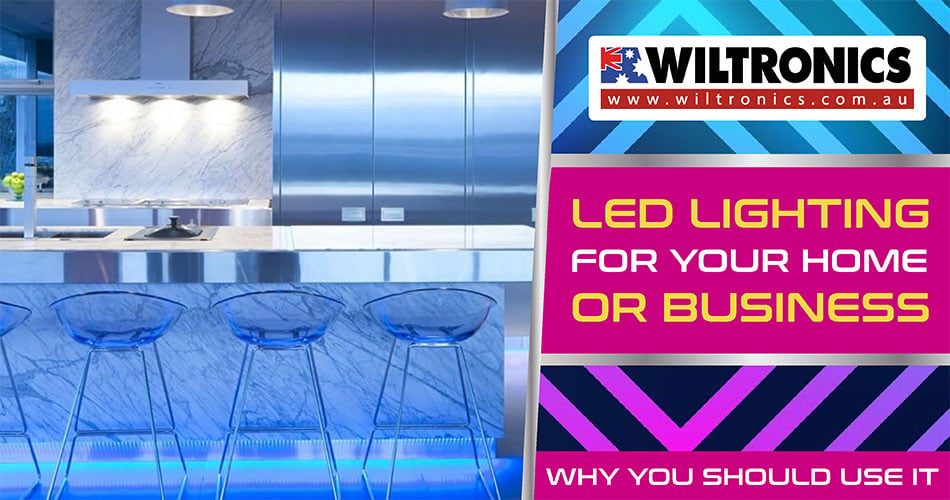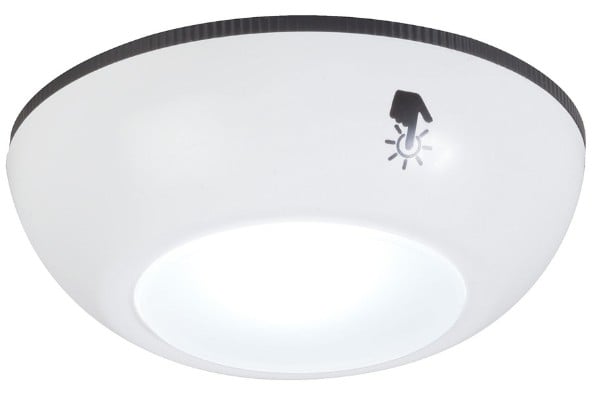The Benefits of Indoor LED Lighting for Homes and Businesses
February 1, 2023

Did you know that indoor LED lighting can make a big difference to your electricity bill?
LEDs represent advanced innovation in the lighting industry. It has become part of the digital age and is the future of illumination. From outdoor to indoor settings, LEDs are everywhere.
Their energy efficiency and greater longevity makes them superior to others. Up to this day, more and more consumers are favouring LED lighting, especially for home use.
So, what has drawn so many homeowners to indoor LED lighting? Keep reading and discover how one light-emitting diode bulb can put a new spin on the ball.
LED Explained
LED stands for light emitting diode. It is a semiconductor device that generates light through a process called ‘electroluminescence’.
As such, it emits visible light when an electric current passes through it. LED lights produce light up to 90% more efficiently than incandescent light bulbs. They use less energy, last longer, and are available in a range of bulbs that can fit into any electrical circuit.
As they need less energy usage, there is no use in estimating the brightness through watts. Instead, check for the lumens. Around 800 lumens is equal to a 60-watt incandescent bulb. In contrast, 1600 lumens is about as bright as a 100-watt incandescent bulb.
How do LEDs work?
LEDs emit visible light when an electric current passes through them. Unlike incandescent bulbs, they do not have filaments that burn out; hence they do not get hot. This is also one of the factors why LED lighting uses less energy and why it is energy-efficient.
Going to the technical details. A diode is a semiconductor device made from aluminium-gallium-arsenide (AlGaAs). It has two electrodes through which electricity flows in only one direction:
- In through anode
- Out through cathode
LEDs are also composed of two types of semiconducting materials: p-type and n-type. These two are described as astringent materials, which both have been doped.
Doped is the process of dipping them into a substance called a dopant or “doping agent”. Both types are then introduced into a chemical matter to alter their original state.
Energy-efficient LEDs are often compared to solar cells. There sure is a huge difference. For one, solar cells convert visible light into an electric current. They are also known as photovoltaic cells, which can usually be seen in most solar panels.
In short, they convert sunlight into electricity — a feature that LEDs do not have. Nevertheless, LED lighting has enormous benefits for its users.
Indoor LED Lighting Explained
Over the past decade, LED technology has dominated the lighting industry. Today, it is the primary choice of many for practical lighting applications. This is especially true for indoor use, which covers a large square footage area of a facility.
Indoor LED lighting proves to be more favourable than conventional lighting solutions. Besides its obvious natural energy-saving characteristics, it provides higher-quality lighting. Many building owners, facility managers, or simply occupants can vouch for this.
There are several key reasons why.
The Benefits of Indoor LED Lighting
Below are the various benefits of LED Lighting’s indoor applications:
1. Reduced energy use, saving the environment
As mentioned, LEDs are about 90% more efficient when it comes to light production. This means rather than producing heat, they generate light.
This is something that incandescent bulbs cannot do. The majority of their energy gets turned into heat instead of light. With this, the heat becomes wasted energy as it does not serve any purpose.
LED lighting uses 25% to 30% of the energy, lasting 8 to 25 times longer than halogen incandescents. Thus, savings extend not only to replacement costs but also ongoing charges, a.k.a. your electricity bill.
It may not seem like much at first, but in the long run, it can make a big difference. Also, reducing your energy consumption is a great way to help protect the environment.
2. Longer lifespan
Changing burnt-out light bulbs every now and then can be a nuisance. This is often the case for incandescent lights, with a typical 1,000 hours lifespan, which is not enough.
But with LEDs, you won’t have to change the bulbs very often. They usually last around 25,000 hours, and some are even rated at 50,000 hours. And depending on how you use it, its life may be as long as 100,000 hours. This means it can last anywhere from six to twelve years – and that is 40 times longer than an incandescent bulb!
This lowers the amount of time you put into maintenance, lowering your upkeep cost. If it is for a business or company, you will spend less paying for an electrician to change the lights, as well.
3. Heat is not a problem
Fluorescents turn most of the energy into heat. When touched, they can burn your skin. LEDs, in contrast, guarantee your safety on this matter.
They are cool to touch, eliminating the heat while running even if you leave them ON for hours. Moreover, LEDs are hazard free because of the absence of glass. This also means they are less susceptible to breakage, adding to their safety.
4. Durable construction
The robust materials of the bulbs (and the overall design of LED lights) are another great factor. They do not use delicate filaments or neon gas to produce light. So LEDs do not need glass bulbs like traditional filament.
They may even work in extreme temperatures where other bulb types may not work. Plus, they can handle shocks and vibrations and colder temperatures by about 5%. This makes them ideal for lights in both indoor and outdoor settings.
5. Offers great health benefits
There are proven significant health benefits of using indoor LED lighting. On top of sustainability, durability, and great performance, these health benefits include:
- Helps reduce headaches. Traditional fluorescent bulbs tend to flicker a lot, causing eye strain. But LED lighting flickers less. If used at home, they won’t impact those who suffer from migraines and headaches.
- Improve learning performance and productivity. Installing LED lights in learning or working environments ensures increased efficiency.
- Contains no harmful toxins. Unlike fluorescents, they do not contain mercury vapour or other chemicals. With this, they do not produce harmful UV radiation, making them a lot safer to use.
6. You can contribute to the planet
No toxicity within the compounds = almost no UV emissions. Thus, LED lighting, in general, is eco-friendly and makes great small steps in saving the planet.
Even better, LEDs are 100% recyclable, minimising up to a third of your carbon footprint. For instance, when you are not buying new bulbs often, you are not consuming as many materials.
With fewer bulbs needed, this helps reduce manufacturing needs. At the same time, it diminishes the impact on the environment.
Get Your Indoor LED Lighting Here!
Lighting your home is an essential part of interior design. Aside from its energy-saving properties, you can never go wrong with LED lighting.
If you are looking for indoor LED lighting solutions to invest in, check out a few from our range below:
Automatic LED Night Light with Sensor
No longer available
Product code: JSL3530
This night light automatically switches ON and OFF, depending on the ambient light. All thanks to its sensor feature. The low light 2-lumen output provides enough comfort but does not prevent sleep.
Includes an adjustable light direction feature. Mains powered, plug and play. SAA approved.

LED Touch Light Twin Pack
Product code: JSL3501
LED Touch Light with touch-sensitive ON/OFF operation that is easy to install. Uses a bright LED light for energy efficiency.
Pack of two lights and includes self-adhesive pad. Batteries not included.

LED Diffuser Strip Frosted 1 Metre
Product code: LA3575
This LED Diffuser Strip allows for easy and neat installation of LED light strips. It helps create a uniform light with dot-free illumination. For indoor use, it is ideal for closets, wardrobes and cabinet lights.
LED light strips not included.
The Bottom Line
Maintenance and replacement are much easier with indoor LED lighting. All thanks to their energy-saving and long-lasting qualities! And nothing feels quite as good as doing your part in protecting the environment. No matter how big or small your step is.
With these fantastic benefits, are you ready to switch over to indoor LED lighting?
This article was originally published in July 2021 and has been updated.
© Electrotech Brands Pty Ltd 2023


Write a Comment
You must be logged in to post a comment.